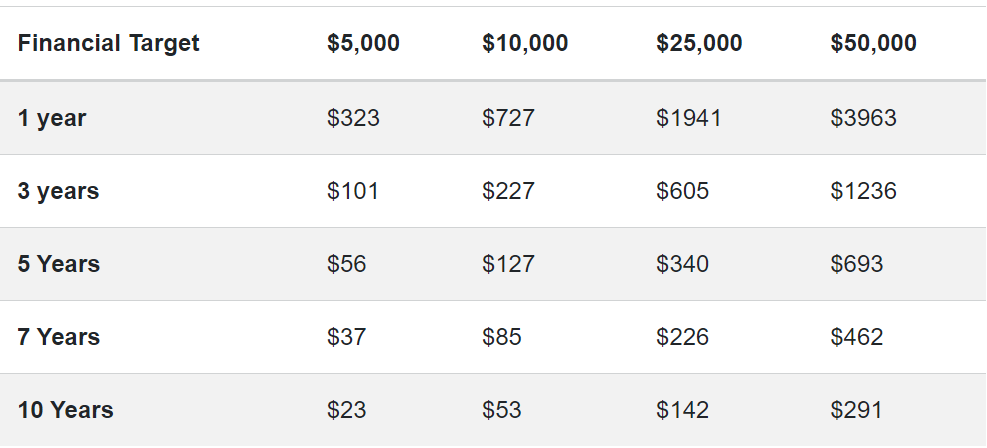Investment Watch: Summer 2026 Outlook
Investment Watch is a quarterly publication delivering insights into equity strategy and economic trends. The Summer 2026 edition explores global and Australian growth outlooks, structural shifts in asset allocation, and highlights opportunities across AI, resources, property, and income strategies to help investors navigate volatility and prosper in the year ahead.
Investment Watch is a quarterly publication produced by Morgans that delves into key insights for equity and economic strategy.
This publication covers
Economics - 'The Australian economy: a landscape of challenge and opportunity'
Asset Allocation - 'Structural shifts demand a portfolio rethink'
Equity Strategy - 'Diversification is key'
Banks - 'Fundamentals don't justify share price strength'
Industrials - 'Prepared for the uptick'
Travel - 'Selective opportunities'
Resources and Energy - 'Steady China and tight supply'
Consumer discretionary - 'Recovery underway'
Healthcare - 'Attractive, but with limited opportunities'
Infrastructure - 'Rising cost of capital but resilient operations'
Property - 'Structural tailwinds building'
It’s hard to believe that 2025 is already drawing to a close. As we enter the holiday season, we want to take a moment to express our deepest gratitude for your continued support and trust. This trust is the very foundation of everything we do. This time of year is a chance to reflect on the significant progress we’ve made. The entire team at Morgans is incredibly proud of the efforts and achievements from the past twelve months that reinforce our commitment to providing you with top-tier advice and opportunities. These achievements mean that Morgans continues to provide top-line advice and investment opportunities that benefit clients across our national branch network.
Morgans clients receive exclusive insights such as access to our latest Investment Watch publication. Contact us today to begin your journey with Morgans.
The Australian Government has completed a review of the retirement income system to assess how it will perform in the future as Australians live longer and the population ages.
The review, which was commissioned following a recommendation by the Productivity Commission, was not asked to make recommendations or propose changes to policy settings. However, it did uncover evidence that many aspects of the system need improved understanding.
Key observations and overview
The need to improve understanding of the system
- Dealing with complexity. Complexity and uncertainty, a lack of financial advice and guidance, and low levels of financial literacy are impeding people from understanding the system. As a result, some people fail to adequately plan for retirement and make poor decisions about how to use their savings in retirement.
- The nature of retirement income. Most people die with the bulk of the wealth they had at retirement intact. It appears they see superannuation as mainly about accumulating capital and living off the return on this capital, rather than as an asset they can draw down to support their standard of living in retirement. The family home is an underutilised source to support living standards in retirement.
- The nature of retirement. The nature of retirement has changed. For many, the transition from full time work to permanent retirement is gradual rather than abrupt. Some people retire more than once, others are involuntarily retired. There is no mandatory retirement age for most workers.
- The objective of the system. The retirement income system lacks an agreed objective. Differing views on the appropriate level of the Superannuation Guarantee (SG) rate stem from different views about the system's objective.
- Role of the pillars. The ‘pillars’ of the retirement income system are commonly seen as being the Age Pension, compulsory superannuation, and voluntary saving (including housing). Some see housing as a separate pillar.
- Dealing with diversity. The retirement income system covers people in very different circumstances: different incomes, time in the workforce, employment situation, capacity to save, home ownership status, risk preferences, financial literacy, partnership status and life events. While the system may provide adequate retirement incomes for many Australians, there is uncertainty about if and how it can compensate for those who may fall short, such as women, lower income renters, individuals not covered by the SG, involuntary retirees, Aboriginal and Torres Strait Islander people and those with disability.
Source: The Australian Government – The Treasury.
What does this mean for you?
This review has identified the need for greater financial advice for consumers, particularly when it comes to retirement planning, to help people understand the complex laws and regulations that are already in place.
Without this financial advice from qualified financial planners, you might be missing out on maximising your retirement potential.
Speak to one of our qualified Morgans advisers today to define your own retirement journey.
The A2 Milk Company (ASX:A2M) recently conducted its Annual General Meeting (AGM), maintaining its guidance amidst a backdrop of uncertainty. While the need for a significant 2H21 improvement is acknowledged, positive signs of recovery in corporate daigou demand and improvements in daigou channel inventory offer a glimmer of hope.
Revised Forecast and Investment Outlook
Forecast Adjustments
In response to prevailing uncertainties, our forecasts have been recalibrated. Despite A2M's guidance, we've adjusted our FY21 EBITDA forecast approximately 4% below the lower end of its guidance range, reflecting a cautious stance.
Investment Recommendation
Despite the prevailing uncertainty, we maintain an Add rating for A2M. While near-term earnings uncertainty may exert pressure on the company's share price, we remain optimistic about its medium to long-term prospects.
Maintained Guidance with Qualifications
Overview of 1H21 and FY21 Guidance
A2M has upheld its 1H21 and FY21 guidance as previously stated. 1H21 revenue is anticipated to be NZ$725-775 million, showing a decline of 4-10% compared to 1H20. FY21 revenue guidance stands at NZ$1.8-1.9 billion, with an EBITDA margin of approximately 31%, translating to EBITDA of NZ$558-589 million.
Dependency on 2H21 Improvement
Acknowledging the uncertain forecast, A2M stresses the necessity of substantial improvement in 2H21 (16-22% revenue growth compared to 2H20). This period's performance hinges on critical factors such as the daigou channel's improvement and sustained growth in China labeled products through the MBS channel.
Regional Updates
ANZ Region
A2M underscores the challenging trading conditions in 1H21, particularly due to the contraction in the daigou/reseller channel, exacerbated by Victoria's Stage 4 restrictions. However, recent weeks have shown initial signs of recovery in the corporate daigou, following the launch of incentive programs and the relaxation of lockdown measures in Victoria.
Asia Region
Sales growth in the MBS segment remains robust, driven by an expanded distribution footprint and increased sales velocities. The company's performance during the 11/11 sales event met expectations, with notable increases in English label IF sales volume.
North America Region
A reduction in FY21 EBITDA loss compared to FY20 is anticipated, aligning with previous forecasts.
Forecast Adjustments
Considering the uncertain 2H21 recovery, our revised forecasts stand below the guidance, projecting revenue of NZ$1,731 million and EBITDA of NZ$537 million for FY21.
Navigating Uncertainties Towards Growth
While uncertainties linger, A2M's comments on the improving daigou channel inventory offer a ray of hope. We view the current challenges as transitory, with A2M's robust balance sheet and quality growth trajectory underpinning our confidence in its long-term potential.
Morgans clients receive access to detailed market analysis and insights, provided by our award-winning research team. Begin your journey with Morgans today to view the exclusive coverage.
It seems Australians have been thinking more and more about the benefits of self-managed super funds (SMSFs) as they express concerns about their existing super fund in relation to transparency, liquidity and flexibility.
Despite the control, involvement and flexibility an SMSF can provide, there are a few things people need to consider before deciding if an SMSF is right for them.
Ask yourself the following questions:
- Is the fund strictly for benefits in retirement?
- Do you have the time to manage your own fund?
- Will the benefit be worth the cost?
- How will switching to your own SMSF affect your current superannuation benefits?
Having your own super fund to manage may sound easy. However, as you are the trustee of your own fund you are ultimately responsible for every decision you make. You need to understand there are some things you simply cannot do within your SMSF.
The regulator, the Australian Tax Office, will apply heavy penalties against trustees who break the law.
Watch
How much is enough?
This has been a hotly debated issue since the inception of SMSFs. Different people have different ideas as to exactly how much is needed to set up an SMSF. ASIC has recommended at least $500,000 for an SMSF.
It can be argued that people with less than this could easily manage their own SMSF, particularly if they are planning to make large contributions over time and/or have experience with investing.
The issue, of course, is cost. To remain cost effective it is generally accepted that the greater amount of funds pooled within the SMSF, the lower the cost average. Over the long term, as the SMSF account balance grows, the cost of running the fund becomes even more efficient.

# Paul and Mary are using a Corporate Trustee structure, which means an additional $455 ASIC fee. Bill and Ellie are using an Individual Trustee structure, so the only cost is the SMSF Trust Deed. * The ongoing company fee is a reduced ASIC fee because Paul and Mary are using a shelf company as the corporate trustee, and not an existing company. A shelf company acts as the corporate trustee only and is not associated to any other entity activities. ^ Administration fees charged by Morgans Wealth+ SMSF Solutions service and includes annual audit fee. This is an indicative cost only as the actual fee will depend on the administration/accountant service used. ** Ongoing portfolio fee - estimated average Morgans' Wealth+ fee
Size does matter
In relation to costs, clearly size does matter. There is a significant difference in the ongoing costs for Bill and Ellie compared to Paul and Mary. Even where Paul and Mary incur additional costs due to the corporate trustee structure, their average costs are less than half Bill and Ellie's.
If you would like to discuss whether a self-managed super fund is for you, or you would like to know more about what is involved in running your own SMSF contact your local Morgans office, or speak to your Morgans adviser.
"Our model tells us that on this occasion President Trump should be victorious over Biden by a margin of 5.76% of the popular vote. The predictive margin is 1.26 standard errors away from random. President Trump therefore has an 89.6% chance of being re-elected."
Listen to my podcast to find out where this data comes from. I also outline the stats prior to when Barack Obama was re-elected:
Listen to the podcast
Roughly 55% of the ASX300 have now reported results, with only a handful of the ASX50 yet to report. Woolworths, Stockland and Fortescue are notable large-caps reporting this week.
August has been a story of Cyclical and Consumer facing stocks in particular in terms of
- surprising overly fearful expectations, and/or;
- being well supported by the market even if they didn’t.
Whether this can continue when fiscal support scales down will be a key question as we exit August.
Ultimately FY20 results disrupted by lockdowns and COVID related one-off’s are less meaningful than usual, particularly given the broad lack of FY21 guidance seen so far. Ongoing company trading updates and the AGM season are going to be far more important than usual, providing us with more catalyst trading opportunities which have worked well for us so far.
Watch
I provide an overview of the results and current observations:
Results scorecard
We've seen the highest rate of smaller cap "Beats" for several years. More than half are Consumer facing (including Education and Gaming) with Retailers comprising a whopping one-third. General speaking, Cyclicals have surprised, while Defensives have underwhelmed.

Expectations vs ASX200
Retailers are the one bright spot regarding FY21 upgrades. Retailers to report have enjoyed +10% upgrades to FY21 earnings per share (EPS) expectations with ~8% share price gains on average.
Elsewhere we've seen the usual erosion to FY21 expectations with the largest negative contributors including Telstra, CBA, AGL and various US$ earners.
Market optimism
Result day reactions highlight market optimism. The strongest result day reactions are in line with recent history but we are yet to see the market punish disappointment anything like it usually does.
We know equity markets like to pre-empt the recovery phase of the economic cycle which is why AGM season, and not less useful FY20 actuals, will be so important to validate this positioning (or not), especially relative to stretched valuations.
Checking in on trading behaviour
In our Reporting Season Preview, we spoke about tactics for trading around discrete catalysts given the mood of the market.
Of the +60 Catalysts flagged through July and August, the "Flagged Beats" have outperformed the "Flagged Misses" by ~12% since the published reports.
Notable winners include Collins Foods, AP Eagers, ALS Limited, Data 3, Adairs, Virtus & Monash, Isentia, Superloop and Dominos.
What's interesting is that much of that performance has occurred in the lead-up to the catalyst, rather than on the announcement.
Given the lack of FY21 guidance so far, trading updates and the upcoming AGM season look like providing a host of further opportunities to trade tactically around the abnormal mood, valuations and momentum in this market.
Morgans clients receive access to detailed market analysis and insights, provided by our award-winning research team. Begin your journey with Morgans today to view the exclusive coverage.
What is a regular savings plan?
A regular savings plan is an arrangement you can create with (generally) a fund manager to invest an initial lump sum followed by regular investment instalments; the most common instalment period being monthly.
Minimum monthly investments usually start at $100. You can nominate your own amount above this according to your cashflow and what you can afford to save.
The regular payments can be deducted from a nominated bank account. This monthly payment is then invested on your behalf by the fund manager in the same manner as the initial investment, which might be in shares or bonds for example, depending on the fund you have chosen.
When you invest in a managed fund, you own 'units' in the fund. The value of the units in the fund will rise and fall with the value of the underlying assets it owns.
How much do you need to start?
You can start a regular savings plan with a fund manager with as little as $1,000. This will enable you to start growing your wealth and start saving for a long-term goal, such as:
- a deposit for a home, or home renovations
- future holiday
- children's or grandchildren's education
Benefits of regular savings plans
Regular savings plans enable you to invest your surplus income at a flexible level while allowing you to access your funds if required. Other benefits include:
Easy investment plan – direct debit from your bank account each month. Ensures a "forced saving" regime for your surplus cash.
Reduced investment cost – via 'dollar cost averaging'. By implementing a regular savings plan you gain the benefit of purchasing investment units at different prices which helps reduce the risk of mistiming the market. Your regular investment purchases less units when prices are high and more units when prices are low. By averaging the unit price paid, your investment cost is reduced. This is 'dollar cost averaging' and means that you don’t have to worry about where share prices or interest rates are headed.
Compound interest "multiplier" – by re-investing your distributions rather than taking the cash, your investment capital benefits from the effect of compound growth; which means, the distribution from your investment also earns interest.
Tax benefits – when a regular savings plan is invested via a specific education savings bond, tax benefits can be enhanced further for education-related expenses.
Flexible access to your funds with the ability to vary or suspend contributions.
How much do you need to invest each month to reach your target?
Below is a an example of the savings targets you would reach over a set period of time, based on the amount you contribute per month (calculated using an average return of 6.5% per annum).

Choosing a managed fund
There are thousands of managed funds to choose from. It's important to understand the different types of funds, the risks and returns, so you can choose a fund that meets your needs.
Morgans advisers are qualified to help you choose an investment fund that’s right for you and put in place an appropriate savings plan to help you achieve your financial goals.
If you would like more information, please contact your nearest Morgans office for an obligation-free discussion.













